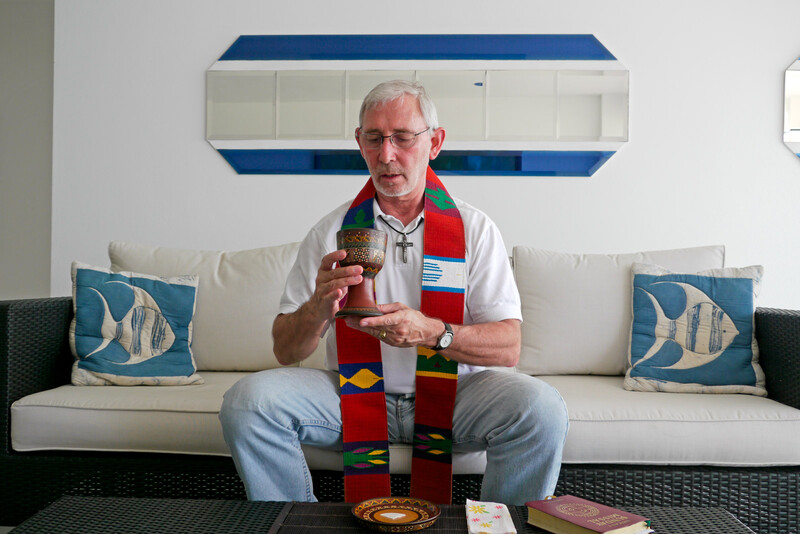On a hot July day this past summer, on a beach west of Naples, Italy, four girls decided to cool off in the Mediterranean. They jumped from a rock into the rough waters and were quickly overwhelmed by the surf. Lifeguards managed to save two of the girls, but the other two, 13-year-old Cristina and 11-year-old Violetta Djeordsevic, drowned. Their bodies were laid out on the beach, their feet sticking out from under the towels covering them, while a few yards away, Italian beachgoers continued to sunbathe, chat, and play Frisbee.
All four girls were Roma — commonly called Gypsies — and the newspaper photographs showing the apparent indifference of the other bathers to the tragedy led to an international outcry. The incident, coming on the heels of mob attacks on Roma communities in Italy earlier this year and the announced intention of the Italian government to fingerprint all the Roma in the country, underscored the degree to which, in much of Europe, the Roma are still despised and distrusted.
Stories of Roma neglect and poverty are all too familiar to Jack Greenberg ’45CC, ’48LAW. Since 2003 the famed civil rights lawyer, who, in 1954, at the age of 29, helped win the landmark United States desegregation case Brown v. Board of Education of Topeka, has been working for the integration of the Roma in Europe, particularly in the field of education, which he believes is the key to addressing other social ills. “The Roma children have to go to school,” Greenberg explains, “but even though the schools are free, they don’t have any clothes to wear to school, they don’t have any transportation to get there, and they don’t have any money to buy lunch. So they drop out or they fall behind and become segregated.”
The dilapidated state of Roma schools reflects the general living conditions among this highly disparate ethnic group, some seven million of whom are scattered throughout Europe, where they often live in ramshackle houses with no plumbing or electricity. (Actual population figures are difficult to calculate, as many Roma deny their ethnicity to avoid persecution.) Believed to have migrated from India in the 15th century (the word Gypsy is derived from “Egypt,” where the Roma were mistakenly thought to have originated), the Roma have faced persecution ever since, from their enslavement in Romania until 1864 to the systematic murder of hundreds of thousands of Roma by the Nazis during the Holocaust. Today, the European Roma are subject to sky-high unemployment rates, squalid living conditions, segregated schools, and violent racist attacks. According to Greenberg, in countries like Romania, Bulgaria, and Hungary, upwards of 90 percent of the Roma population lives below the poverty line.
Greenberg’s experience in the civil rights movement in America lends him a unique perspective on the plight of the Roma. Brown, one of the most significant Supreme Court decisions of the 20th century, sparked more than a decade of social strife over the desegregation of schools and universities in the U.S. In its wake, Greenberg, as assistant counsel of the NAACP Legal Defense Fund (LDF) under Thurgood Marshall, and later as director counsel, argued dozens of cases that hammered away at the racial barriers in this country and began to give African Americans equal access to trains and buses, restaurants and hotels, schools and universities.
Greenberg remained with the LDF until 1984, when he joined the Columbia faculty. Now, at 83, Greenberg, who was dean of Columbia College from 1989 to 1993, is facing one of his biggest hurdles yet with the Roma. But it’s by no means a new challenge; indeed, Greenberg’s experience in the civil rights arena predates even Brown. To draw the full arc of his crusade against racial injustice, one must go back 60 years, to a lesser-known case that would set Greenberg on a path that he walks to this day.
Roots of a Struggle: The Groveland Rape Trial
The Groveland rape case was national news in late July 1949. Four black males, Charles Greenlee (who was 16 years old), Ernest Thomas, Samuel Shepherd, and Walter Irvin had been accused of raping a white woman, Norma Padgett, 17, one night on a road near the town of Groveland in central Florida. After the arrest of Shepherd, Irvin, and Greenlee, who were severely beaten by the local police, armed mobs gathered around the jail, and others firebombed black homes and businesses. To restore order, the governor called in the National Guard.
That September a local judge denied motions by LDF lawyer Frank Williams to change the venue of the trial. Despite the fact that no actual evidence of rape was ever presented by the prosecution, and that Padgett had some difficulty in identifying her assailants, Shepherd and Irvin were convicted and sentenced to death by the all-white jury, while the teenage Greenlee was sentenced to life imprisonment. (Thomas had been tracked down in the woods by a posse and murdered.)
After the LDF lost its appeal on Groveland in the Florida Supreme Court, Marshall assigned Greenberg to write the petition for a writ of certiorari to ask the U.S. Supreme Court to hear the case.
Greenberg argued that the jury selection in the trial had been nonproportional, and that because of the local violence and hysteria, the trial venue should have been changed to protect the defendants’ right to due process of law.
The argument was successful. In April 1951, the U.S. Supreme Court heard the case and reversed the lower court’s conviction. Supreme Court Justice Robert H. Jackson wrote in his opinion that the sensationalist press coverage and prejudicial atmosphere surrounding the trial had improperly influenced the defendants and dictated a guilty verdict. “The [Groveland] case presents one of the best examples of one of the worst menaces to American justice,” he wrote.
That summer, Greenberg and Marshall took a train to Florida. A local black lawyer named Paul Perkins accompanied the two LDF lawyers to bars and clubs along rural county roads in search of witnesses to corroborate Irvin’s and Shepherd’s testimonies. They found the doctor who had examined Padgett and they visited the run-down shack where Irvin lived with his mother. The miserable living conditions of the black residents would have a lasting impact on Greenberg.
The lawyers also found a detective in Miami who evaluated the plaster casts of footprints and tire tracks presented in the trial — the prosecutors’ only hard evidence connecting Irvin and Shepherd to the crime — and concluded that they had been faked. Greenberg, Marshall, and their associates felt they had a good case, but they also knew that the facts didn’t really matter, that a black man accused of raping a white woman in the Deep South at that time was as good as convicted. The most they hoped for was to get Shepherd and Irvin sentences of life imprisonment rather than execution.
On November 6, 1951, Greenberg returned to Florida for the trial. While he was inside his hotel room in Orlando, a white mob formed around the building, shouting and waving Confederate flags. Greenberg wedged a table against his doorknob, and in the morning woke up to the news that Shepherd and Irvin had been shot by Sheriff Willis McCall while he was transporting them to the courthouse. Shepherd was dead and Irvin, wounded three times, was fighting for his life. The sheriff claimed that Shepherd and Irvin, who were handcuffed together, had tried to escape.
On Christmas night, just before the retrial was set to resume, Harry T. Moore, the Florida NAACP state secretary, and his wife were killed when a bomb exploded under their house. The ensuing public outrage prompted Florida governor Fuller Warren to offer Marshall and Greenberg a deal. If Irvin pleaded guilty he would get life imprisonment. But Irvin, who had survived three bullets and extensive beatings in jail, refused to confess to a crime he said he had not committed. At the end of the second trial, presided over by the same judge as the first, Irvin was convicted and sentenced to death. Further appeals failed, but Greenberg did not give up.
“We later convinced Florida governor LeRoy Collins that Walter Irvin had been framed, and in a courageous act, he commuted Irvin’s death sentence in December 1955,” Greenberg says. “Irvin stayed in jail a long, long time.” He was finally released in 1968 and died two years later.
After Groveland and Brown
When Thurgood Marshall was appointed to the United States Court of Appeals for the Second Circuit by President John F. Kennedy in 1961, he picked Greenberg to be his successor to lead the LDF, which had by then separated, legally and organizationally, from the NAACP. (It was Marshall who had originally brought Greenberg to the LDF in 1948, after asking Columbia law professor Walter Gellhorn to recommend to him a new staff member.) Greenberg spent much of his first year at the LDF in libraries doing case research and writing memorandums and briefs for the other lawyers on the tiny staff — principally Marshall, Constance Baker Motley ’46LAW, and Bob Carter ’41LAW. In 1950, he won his first big case, Parker v. University of Delaware, the first time a court required that an undergraduate school admit blacks. It was, he says, “heady stuff for a 25-year-old lawyer.” Though some believed a black person should have been picked to run the LDF, Greenberg was well respected by his associates, both black and white, and most agreed that he was an astute institution builder, picking the right legal battles and broadening the LDF’s base of financial support.
Under Greenberg, LDF lawyers were involved in hundreds of cases a year, defending the rights of black university students, sit-in participants, and Freedom Riders. In the early 1960s, Greenberg, with Groveland still in mind, sent out teams of researchers to look up capital punishment trial records, mostly in the South. The LDF found that nearly 90 percent of the 455 defendants executed for rape since 1930 were blacks convicted of raping white women — and that no white had ever been executed (nor would be until 1993) for killing a black person. In late 1963 the LDF launched a full-scale attack on capital punishment for rape, with an aim to eventually abolish capital punishment completely. It took nearly 10 years, but in 1972, in Furman v. Georgia, the Supreme Court finally ruled that the death penalty, having been applied arbitrarily and randomly against blacks (even for crimes like burglary and indecent exposure), amounted to cruel and unusual punishment and was unconstitutional. It was a Pyrrhic win, however, as the case was soon overturned. Many states subsequently instituted new capital punishment laws. But, Greenberg says, standards for capital punishment were finally set and, eventually, the application of the sentence was reduced.
As civil rights laws were solidified, culminating with the passage of the Civil Rights Act of 1964, the LDF began to focus on discrimination cases involving employment, housing, and the rights of the indigent.
A Movement for the Roma?
Greenberg sees many similarities between the current battle for the Roma and the early civil rights struggle in America. But in some respects, he says, the Roma situation presents an even more difficult task.
“The Brown case jump-started the civil rights movement here,” Greenberg says. “It got black families activated to do something about the schools. That didn’t happen with the Roma. In Europe, the Roma are separated among 10 different countries so they don’t have the kind of relationship to one another that the blacks had here in the United States. Despite deprivations, there were black institutions in America, such as the church and state-supported black colleges. There was a network and some black infrastructure and then a substantial cadre of whites supporting civil rights for blacks. Now there is only a small handful of whites in Europe championing the Roma. It’s not mainstream and it’s not political, so there’s no energy.”
Last spring, Greenberg and his granddaughter Jessica Greenberg, now a Columbia College freshman, traveled to the Czech Republic, Hungary, Romania, and Bulgaria to assess the progress of desegregation, which began in 2002 as a precondition for entry into the European Union. In Romania, parents of non-Roma students at one school protested integration by smearing feces on the floor of a classroom and physically threatening the school’s director. In the Czech Republic, where Greenberg sees the least amount of improvement, an antidiscrimination law on behalf of the Roma was rejected by President Václav Klaus. “This law wants to objectify our decision-making, which is nothing less than a politically correct utopia,” Klaus wrote of his May 16 veto. “The idea that any sort of law can create the state of equality social engineers long for is thankfully false.” According to Greenberg, the smoothness of the transition to integration “depends on the leadership, and the ratios of Roma. The smaller the Roma population, the easier.”
Despite the slow pace of Roma integration, Greenberg remains optimistic. He can envision a grassroots campaign in the spirit of the American civil rights movement.
“I would like to see the equivalent of the sit-ins and the Freedom Riders on behalf of the Roma,” Greenberg says. “At some point support for the Roma might reach a critical mass and take off.”



